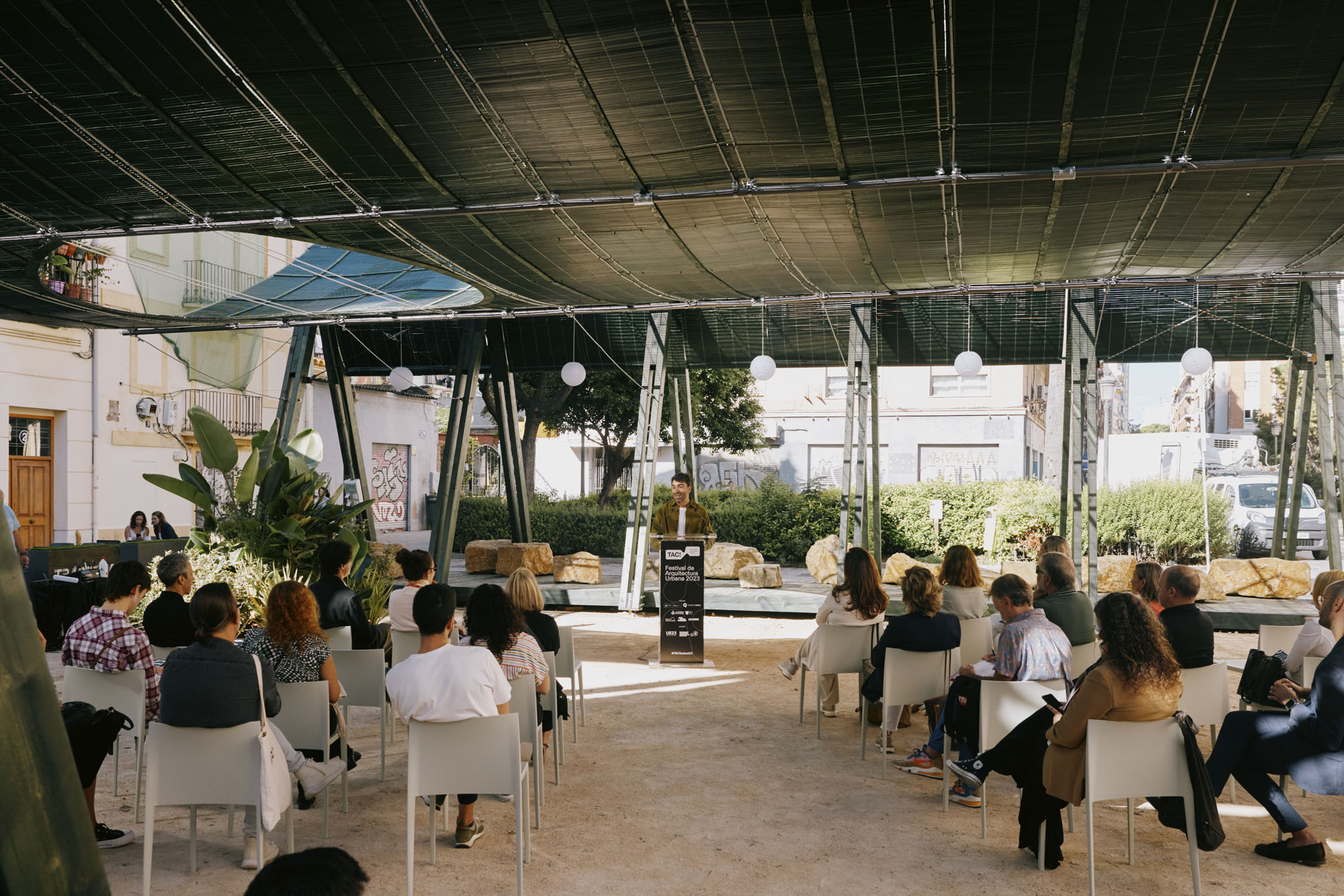Mediterráneo, the ephemeral pavilion selected through a public call, which has been designed by Manuel Bouzas, serves to commemorate the Alicante blinds, which with the emergence of mechanical systems had gone into the background, recovering a tool that allows control of the temperature in an ingenious, simple and economical way.
The square in which it is located is not a "designed" or "planned" space, but is the result of the demolition of a previous residential building, now becoming a refuge where the city's inhabitants can meet. with contemporary architecture and multiple cultural activities. A space that was previously only a transit space for neighbors now becomes a meeting place for the neighborhood.
In the words of Bouzas, Mediterráneo is conceived as an "urban blind, which, instead of protecting a window, covers an entire square, and instead of protecting a single individual, brings together an entire community."
The opening of the TAC City call was also announced at the event! to host the third edition of the festival, an open competition in which urban municipalities from all over Spain can participate until October 27.

Mediterráneo Pavilion Tac! 2023, by Manuel Bouzas. Photograh by BravaStudio.
The pavilion is formed by two triangular wooden porticos that support a large Alicante blind, also made of wood, forming a catenary. The entire project is painted dark green, responding to one of the five traditional colors in which blinds in this region are usually manufactured.
A circular opening is introduced in the catenary that allows the lighting of a small garden inside. In addition, the stones used as a counterweight for the structure serve as furniture that brings people together throughout the day. The torn shadow that it projects allows for the configuration of an “al fresco” public space, where the TAC! programming will take place.
The entire project seeks to promote the circular and proximity economy in the region in which it is located, providing the project with the ability to reuse used materials.
The main challenge of the program will be to experiment with public space and its integrative potential through open activities, designed together with various entities of the local fabric. Proposals stand out such as the colloquiums promoted by various neighborhood groups, celebrations together with the Association of Merchants of the Historic Center of Valencia, workshops on the uses of public space by the L'ETNO Museum, talks by educational institutions such as the UPV or conferences promoted by companies such as IKEA. In addition, sustainability will play a leading role in three activities led by the Valencia City Council around the European Green Capital.
The program of activities in the pavilion will begin this afternoon with the artistic proposal mediterraNEO, a special production by Flipas - Laboratory of Urban Cultures, which is developed within the framework of the cultural program of the Spanish Presidency of the Council of the European Union.
TAC's cultural programming! Urban Architecture Festival is completed with an exhibition at the Territorial College of Architects of Valencia (CTVA) where you can see a selection of outstanding projects presented to the ideas competition, both for its Valencian and San Sebastian headquarters, a set of projects that have provided answers of great originality to the challenges of the climate emergency.









































